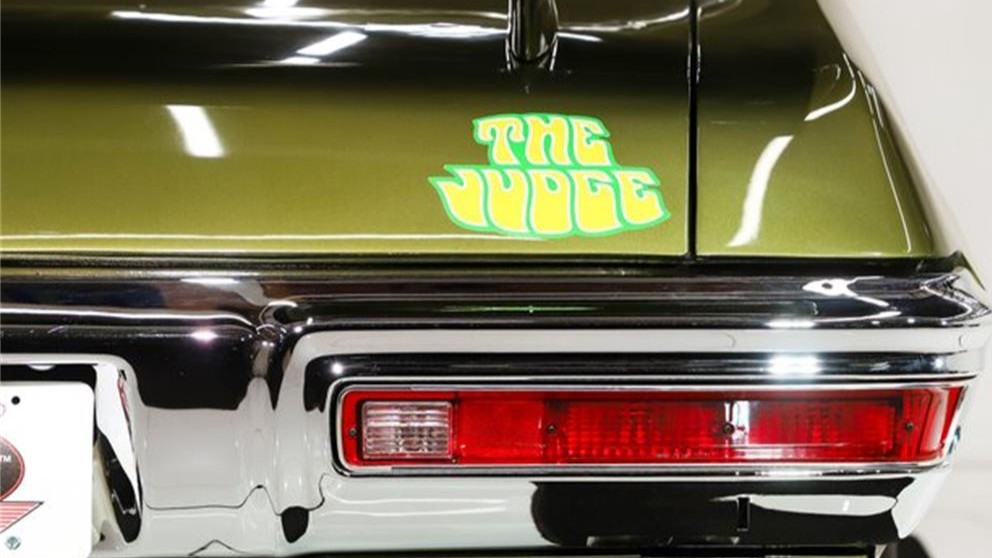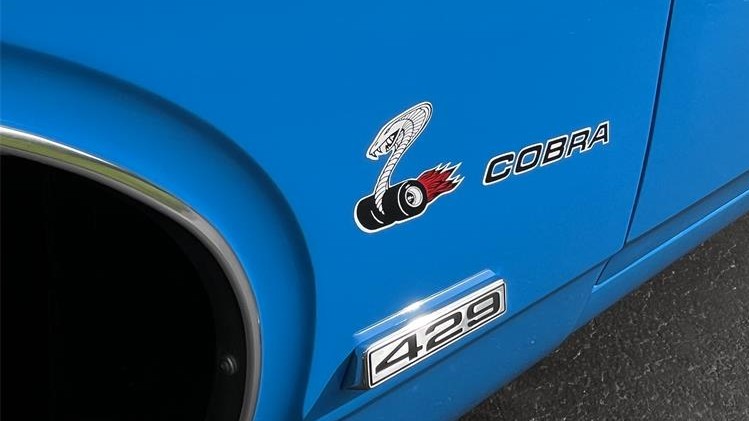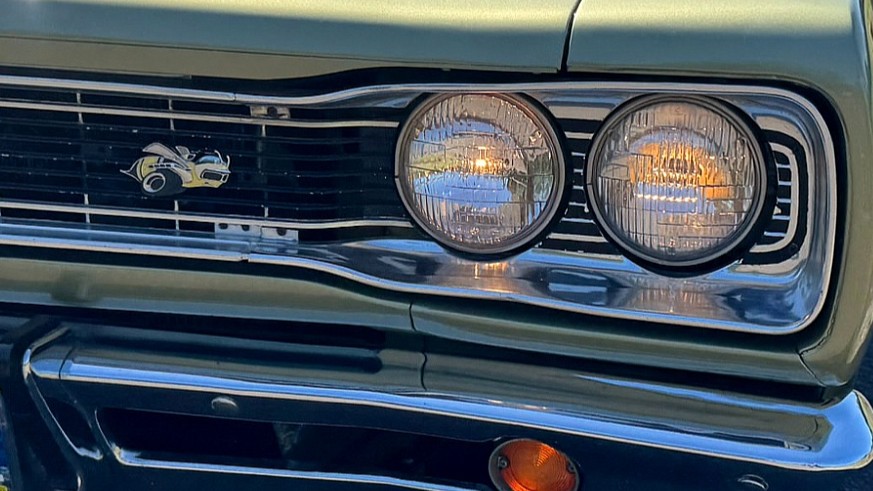Even legendary muscle cars sometimes left the factory floor with performance that didn’t match their full potential. Factors like conservative engineering choices, emissions regulations, and plain manufacturing oversights often held these beasts back. Thankfully, enthusiasts and skilled tuners stepped in, upgrading engines, tuning suspensions, and unlocking hidden power. Their innovations not only corrected factory mistakes but also cemented these cars’ reputations as true speed machines. Discover how these iconic vehicles became faster legends thanks to the passion of their owners and the ingenuity of the aftermarket world. Explore more on muscle car history at MotorTrend.
Even though it’s hot right now, technically it’s “convertible weather.” Once fall hits, driving a convertible will be even more pleasant. There will be more of them out on the road, but you won’t see many four-door drop-tops. The likelihood of seeing one like our Pick of the Day, a 1953 Mercedes-Benz 300 Cabriolet D “Adenauer”, is even lower. You can find it listed on ClassicCars.com by a dealer in St. Louis.
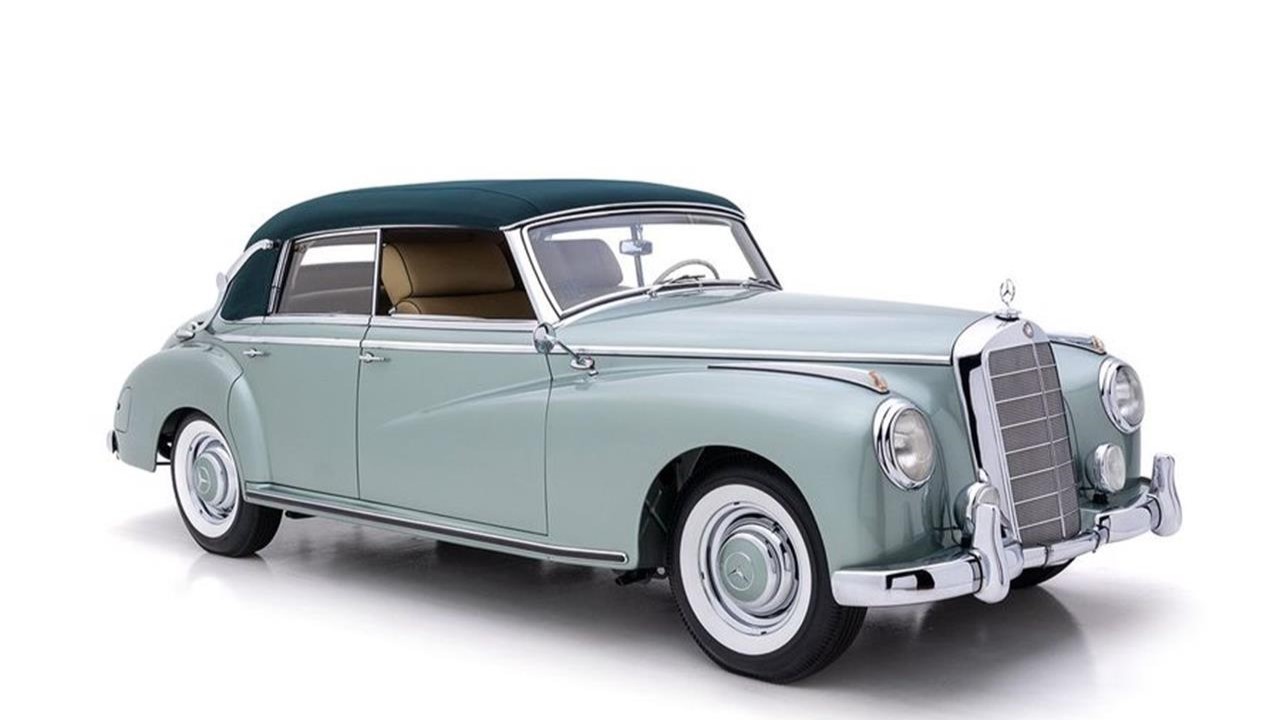
At the first Frankfurt International Motor Show in April 1951, Mercedes introduced the 300 model, which the automaker today calls “the biggest and fastest serial car of German production of its time” and “the true successor of the ‘Grand Mercedes’ of the pre-war era.” It made a strong and lasting impression on the first chancellor of the Federal Republic of Germany, Konrad Adenauer, who would only be chauffeured in a Mercedes-Benz 300, even when he was in another country. More than 70 years later, the 300 is colloquially known as the “Adenauer.”
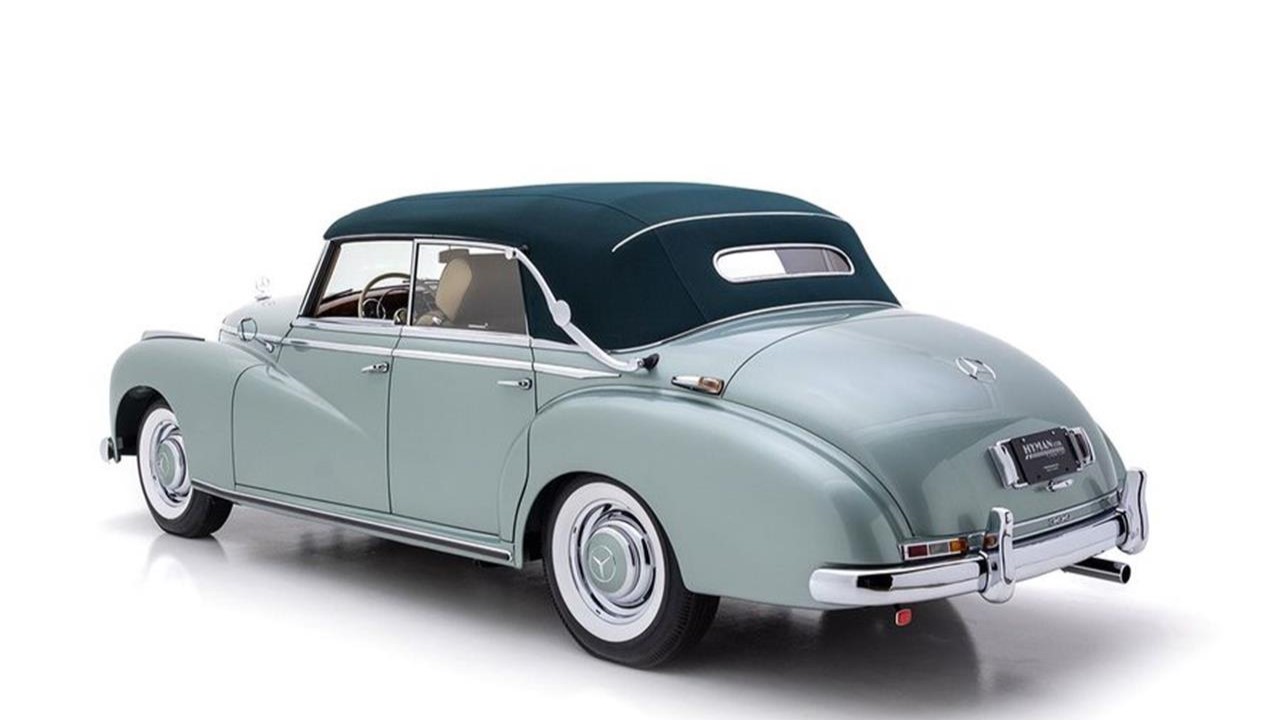
Mercedes only built 455 Cabriolet Ds between March 1952 and April 1954; subsequent versions were identified as the 300 b, 300 c, and 300 d Cabriolet D. This particular first-series Cabriolet D received “a complete nut-and-bolt restoration some years back.” As part of the overhaul, the stately body was finished in Pearl Green, which is all the more noticeable thanks to a generous amount of bright trim. The wheels are fitted with body-color covers and wide-whitewall bias-ply tires. A Dark Green Haartz cloth top with external hinges covers both rows of passengers.
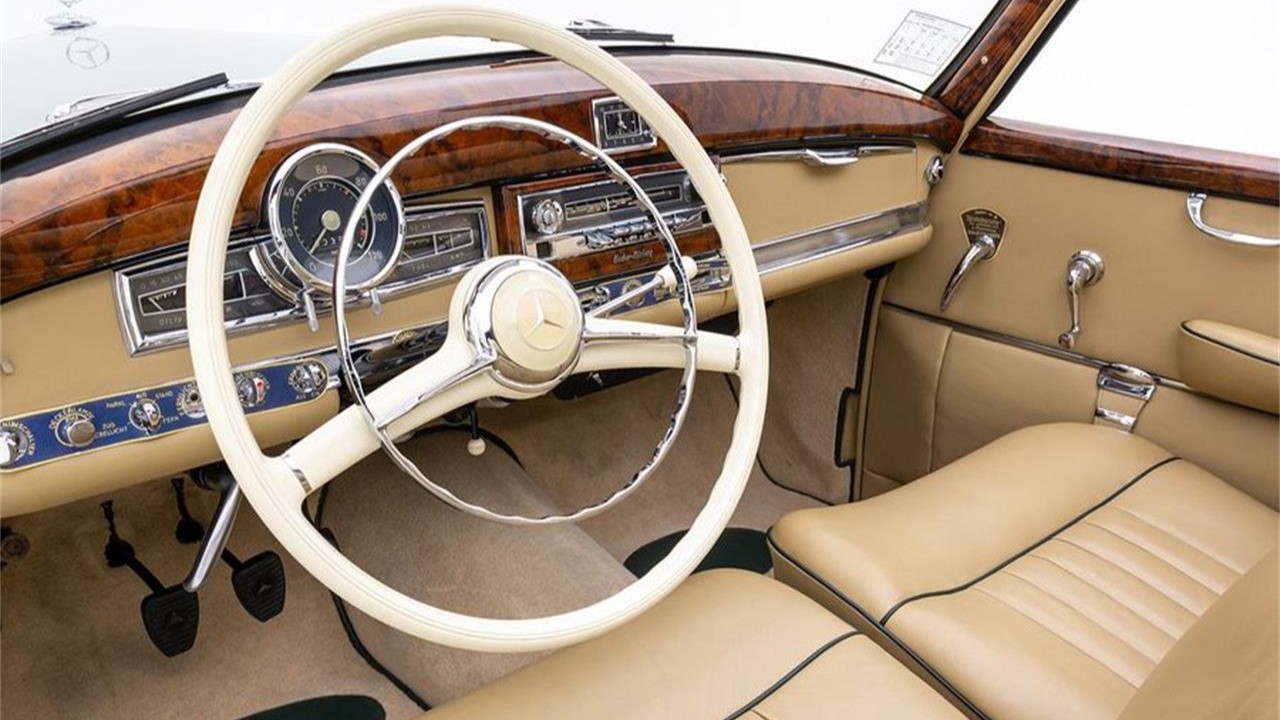
Just like the exterior, the cabin features colors that complement each other well—the seats have been reupholstered in tan leather with dark green piping. Glossy burl wood trim covers the top of the dashboard and extends up the A-pillars and across the top of the door panels.
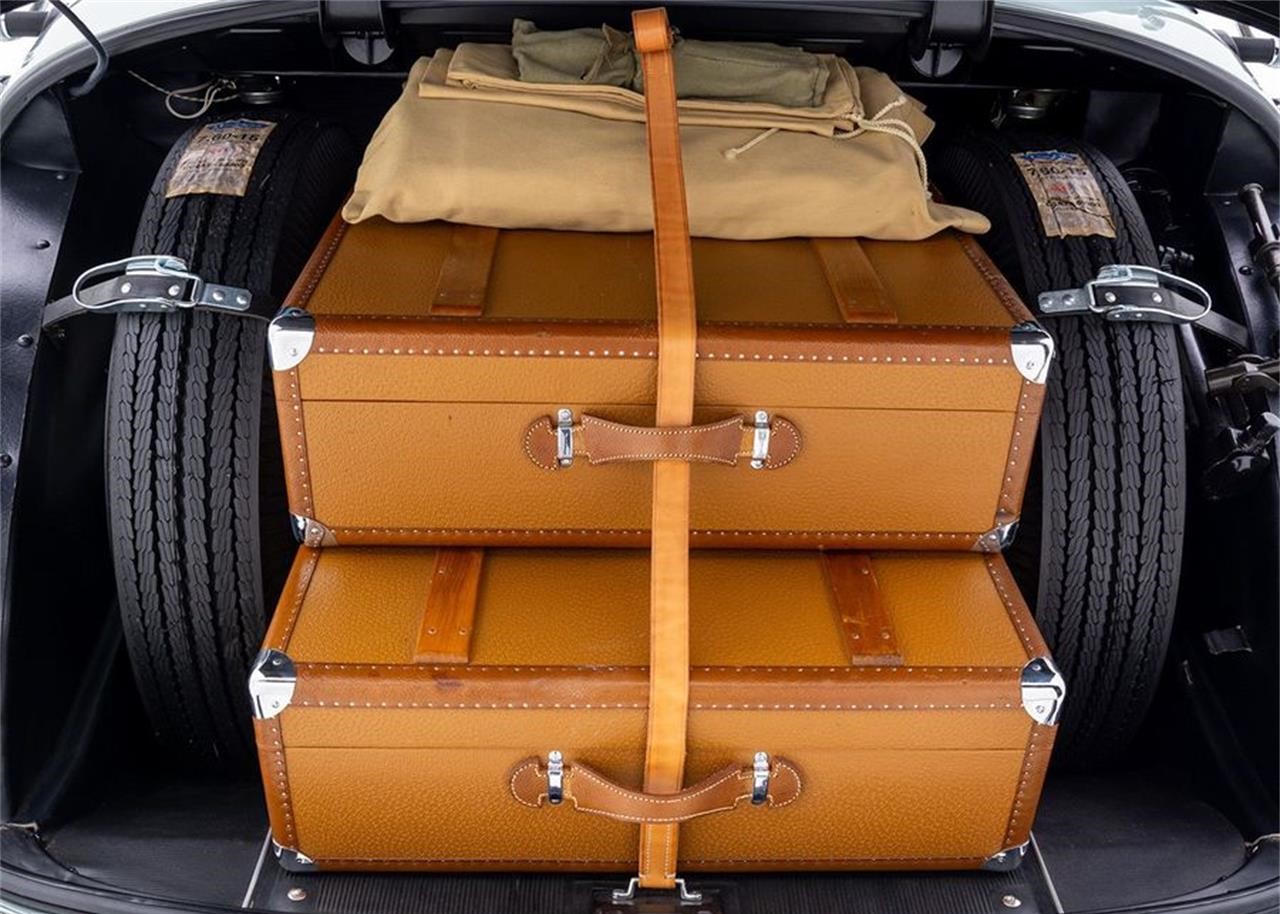
Despite the substantial updates surrounding it, the original Becker-Nürburg radio has been retained; the same goes for the Karl Baisch luggage between the two spare tires in the trunk. Other artifacts include the original owner’s and service manuals.
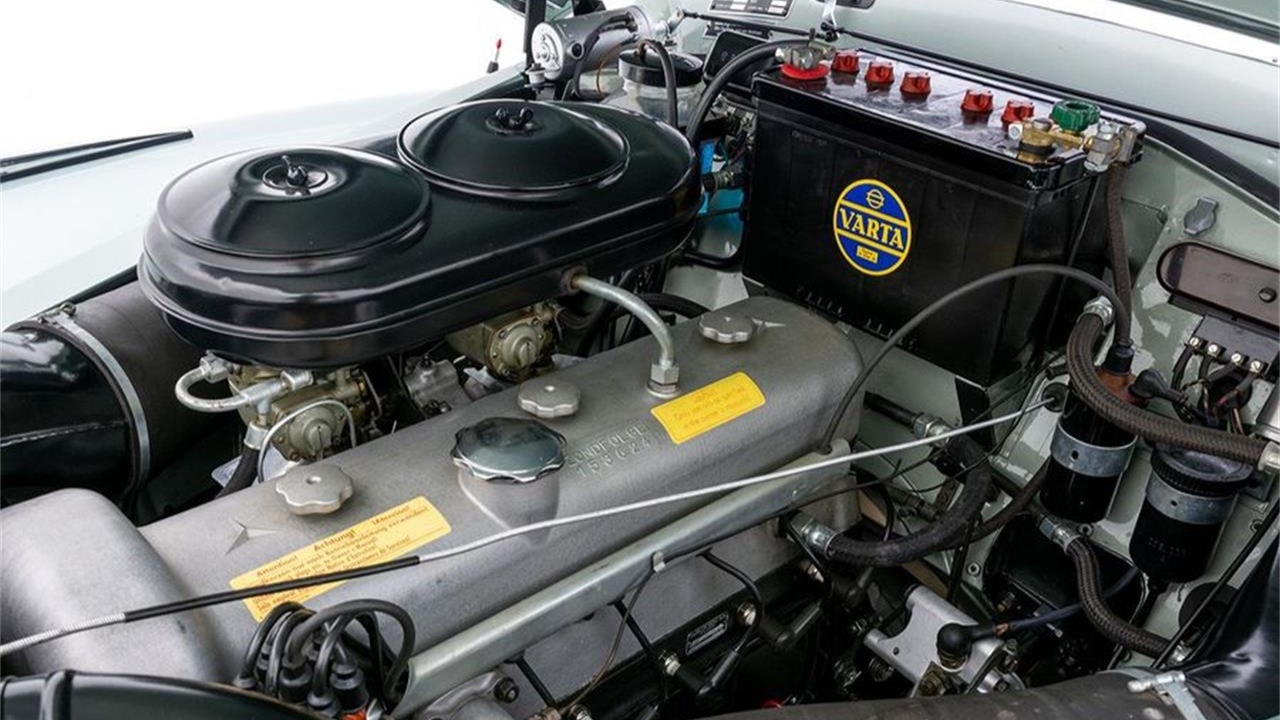
This W186’s restoration extended underneath the hood to the dual-carbureted SOHC 3.0-liter straight-six. Factory-rated at 115 horsepower and 144 lb-ft of torque, it transfers its output through a column-mounted four-speed manual gearbox to the rear wheels.
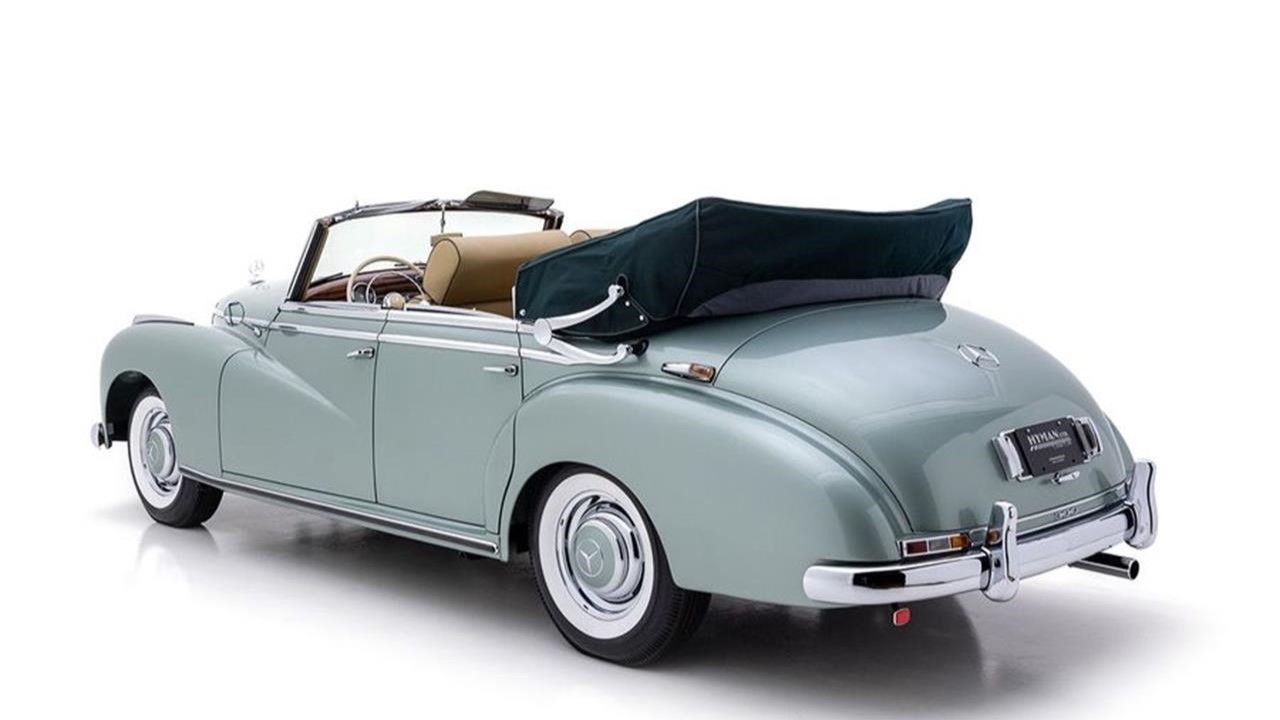
If you want to enjoy the pleasures of top-down driving along with other convertible drivers but not blend in with them, check out this 1953 Mercedes-Benz 300 Cabriolet D. The selling dealer’s listing instructs you to contact them for the price, though the website shows a price of $295,000.
Click here to view this Pick of the Day on ClassicCars.com
Last week, we delved into several Consumer Guide books that surveyed the used car market. American Motors was the object of its affection (or lack thereof), so now it’s time to leave Kenosha and head towards Highland Park, home of the Chrysler Corporation.
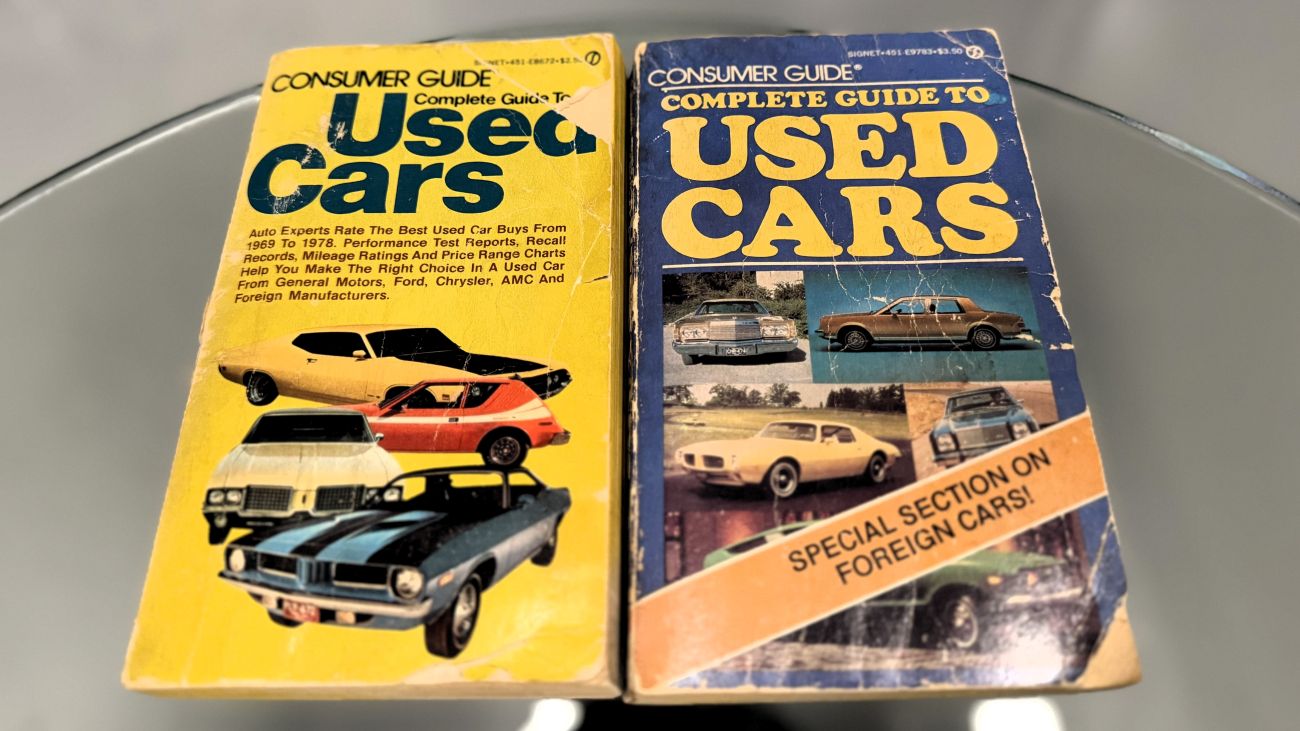
The 1970s were a tumultuous time for the Chrysler Corporation. Even in 1970, with several fresh models and interest from the youth market, things were not fine behind the scenes. Chrysler’s surplus of sales bank cars was costing the company A LOT of money, plus there were rising material and labor costs, and high interest rates along with high debt, all leading to compromised profit margins.
Let’s look at it from a kid’s perspective. While at Arden Montessori, I could not help but notice Chrysler Corporation vehicles were the ones with reliability issues. One kid named Paul (who always dressed up as a cowboy) had parents who picked him up in a 1966-67 Charger or a Valiant. Both constantly had stalling issues, if not failing to start (and, yes, I scored an education on Chrysler’s famous starter with no tuition). It could be suggested that Paul’s dad was a motorhead and owned cars that were not street-friendly, but how else does six-year-old me develop a perception that Chrysler products are unreliable?
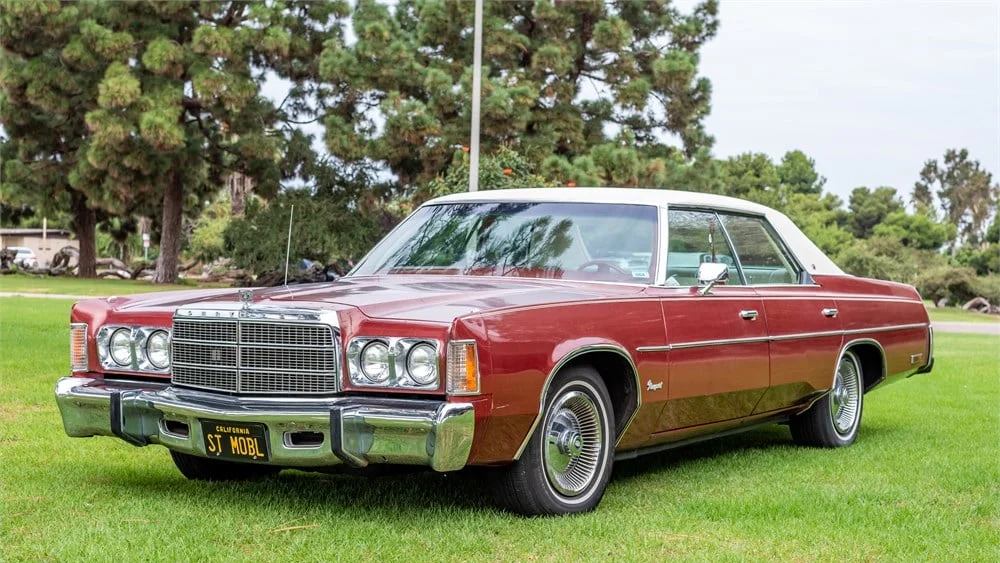
Cue the Consumer Guide book, which noticeably complained about most of Chrysler’s products . . . except one. That one we will revisit when we discuss Plymouth and Dodge, but for now, we will discuss Chrysler and Imperial. Please note the CG rating scale of 5 being Excellent and 1 being Poor.
Chrysler and Imperial
“Chrysler management decisions during the past decade [the 1970s] have been a comedy of errors … This series of mistakes came from a company that is far ahead of most of its competition in engineering excellence.”
- Cordoba: “While the repair record is no longer good enough to rate … as a best used-car buy, it isn’t a bad car either, if you can do your own engine work.” CG rating: 4
- Imperial: “Higher-than-average owner complaint history for body rattles and rust tendencies.” CG rating: 1-2
- Chrysler LeBaron: “The engineers have done an excellent job of insulating LeBaron from unwanted road noise and surface irregularities without making it too soft for stability and control in emergency maneuvers.” CG rating: 4
- Newport/300/New Yorker: “Chrysler’s large cars seem to have a detonator timed to go off around 50,000 miles … Before that magic point, the cars maintain average or even better-than-average records.” CG rating: 1-2
- Newport/New Yorker (1980): “All these Chrysler R-body models rate a notch below GM and Ford competitors.” CG rating: n/a
Today’s AutoHunter Spotlight shines on the first year of the Chevrolet SS 396: 1966, two years after the debut of the Pontiac GTO. Someone in readerland is going to say that 201 were built in 1965, but those were Malibu SSs with the Z16 package, so forgive us for making the distinction. Of course, this 1966 Chevelle SS 396 Sport Coupe is powered by a “porcupine-head” 396, the first of the “Mark IV” big-blocks. The 396 was available in three states of tune, with this restored example having 325 horsepower that is backed by an M20 four-speed. Other features include five-spoke SS mags, the gauge package, a center console, a factory AM/FM radio, and more. Painted Ermine White with a black vinyl top over a black interior, this Bow Tie comes from the selling dealer with a clear title.
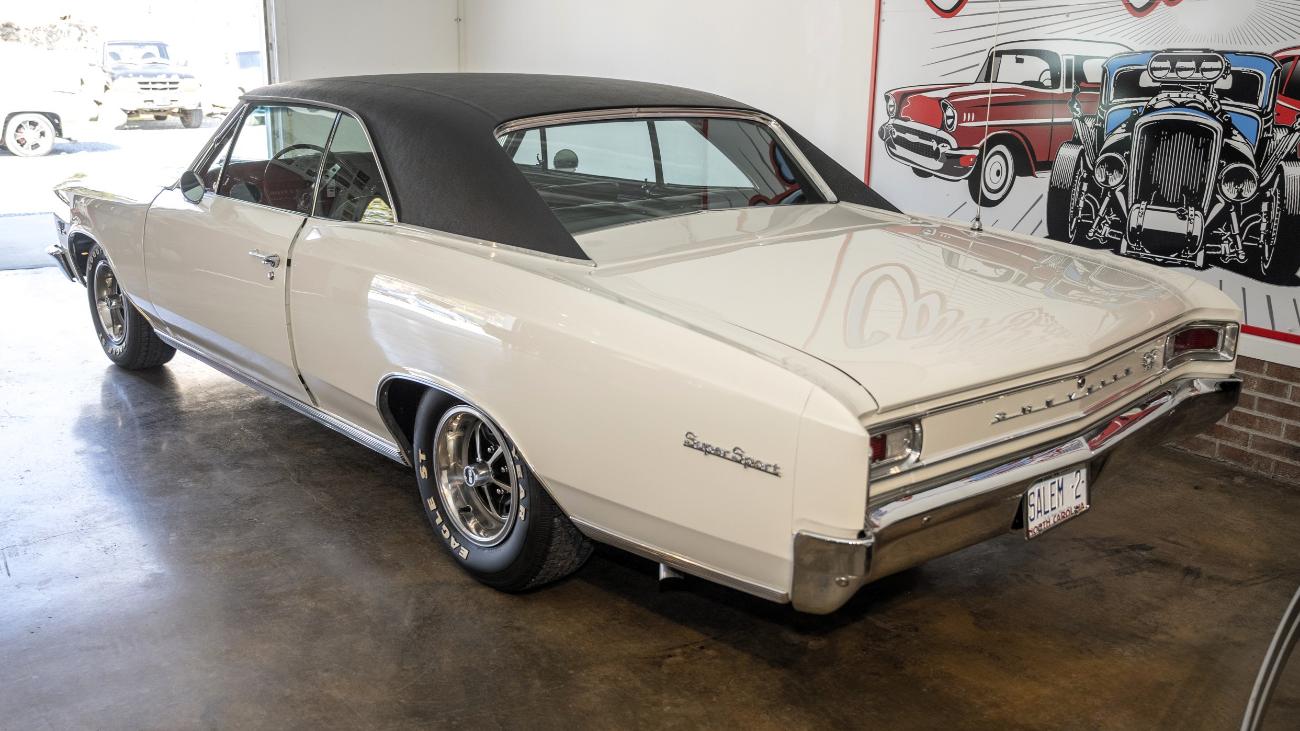
The Ermine White is complemented by a black vinyl top. Other exterior features include a louvered hood, dual chrome side mirrors, rocker and wheel arch trim, a blacked-out grille, and SS 396-specific badges on all four sides of the car. A set of 14-inch SS wheels are wrapped in 225/70 Goodyear Eagle ST raised-white-letter radials.
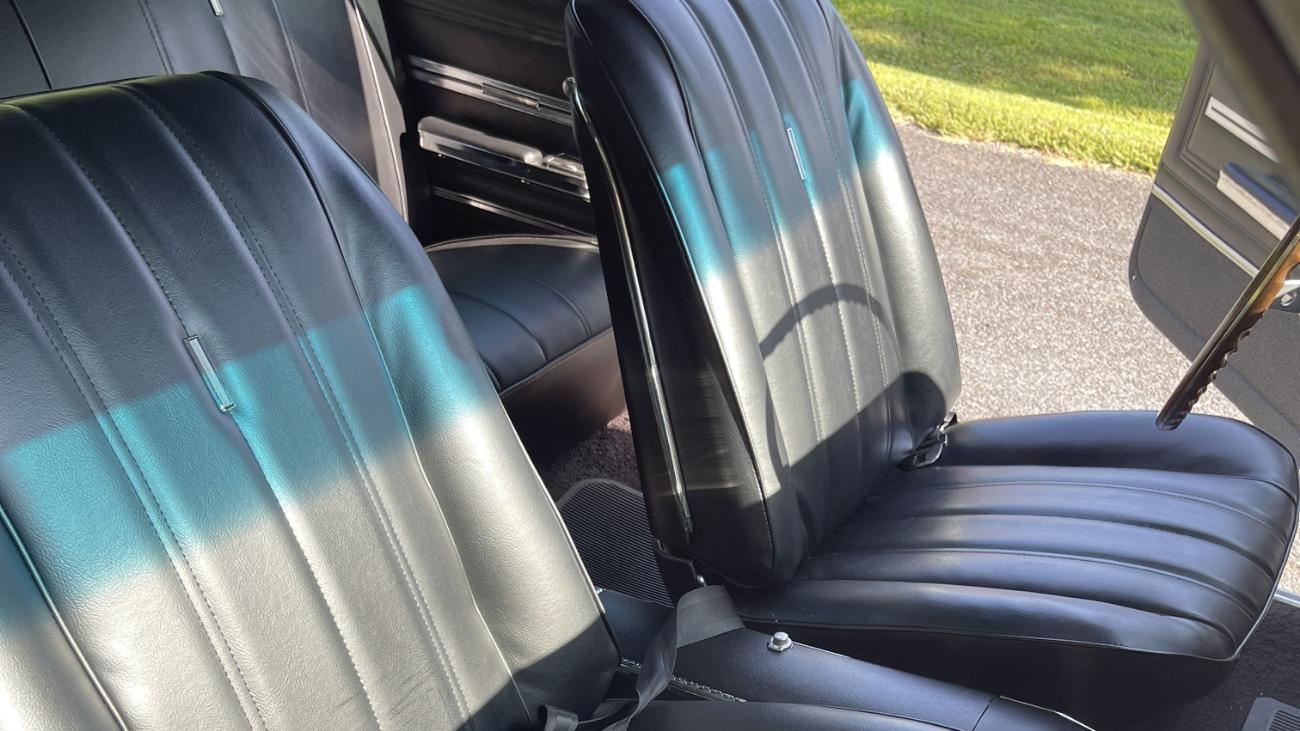
The black interior features vinyl bucket seats up front. Other interior features include a two-spoke wood-rimmed steering wheel, center console with the shifter and a clock, an AM/FM radio, and more.
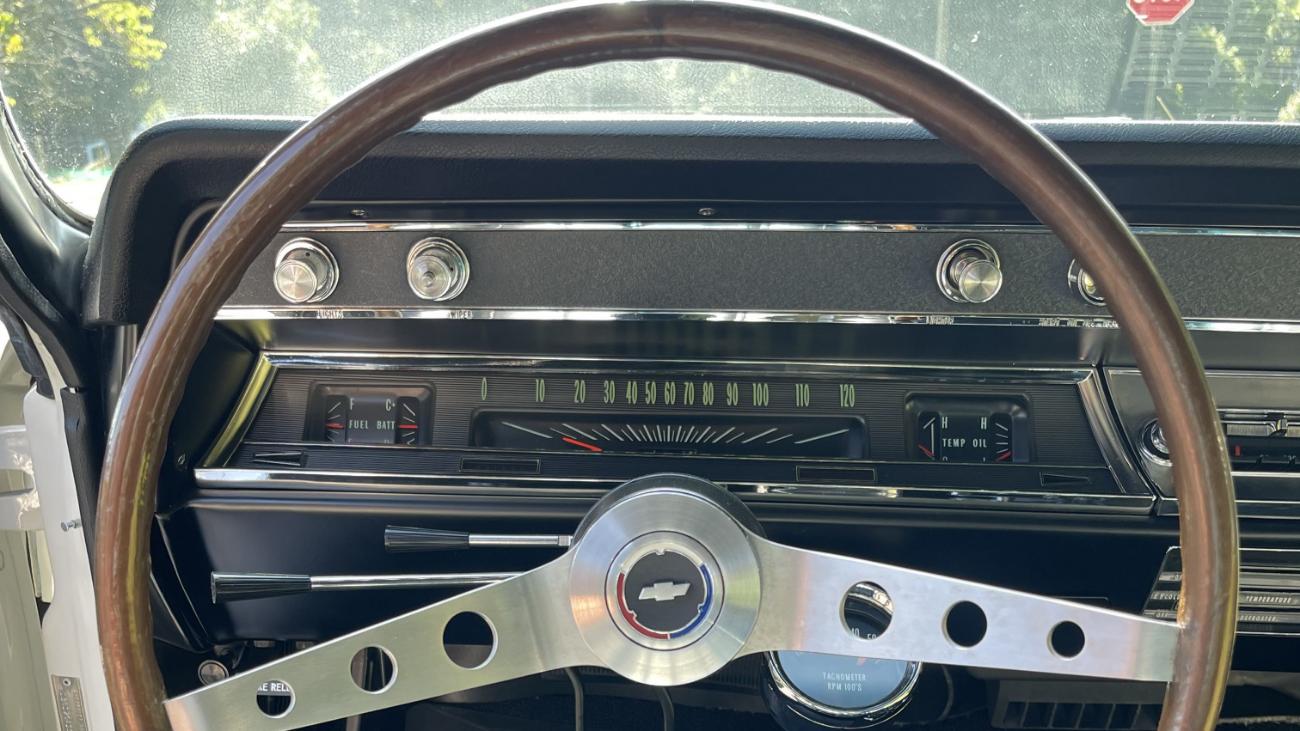
Instrumentation includes a 120-mph speedometer and gauges for the oil pressure, coolant temperature, battery, and fuel level. Additionally, an aftermarket 6,000-rpm tachometer is mounted on the dashboard to the right of the steering column. The odometer shows 62,756 miles, though the title reads mileage-exempt.
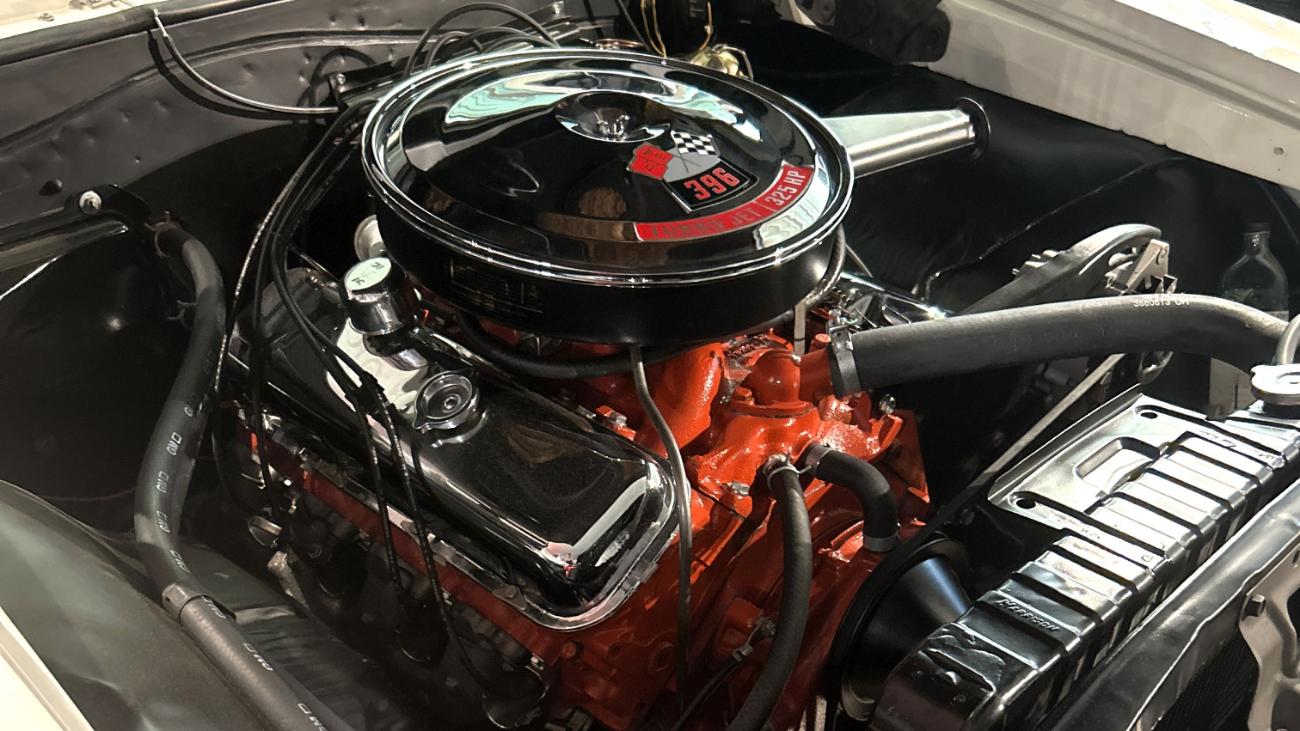
The L35 396 was rated at 325 horsepower when new. It is topped by a four-barrel carburetor and flanked by chrome valve covers. This engine sends its output through an M20 wide-ratio four-speed manual transmission.
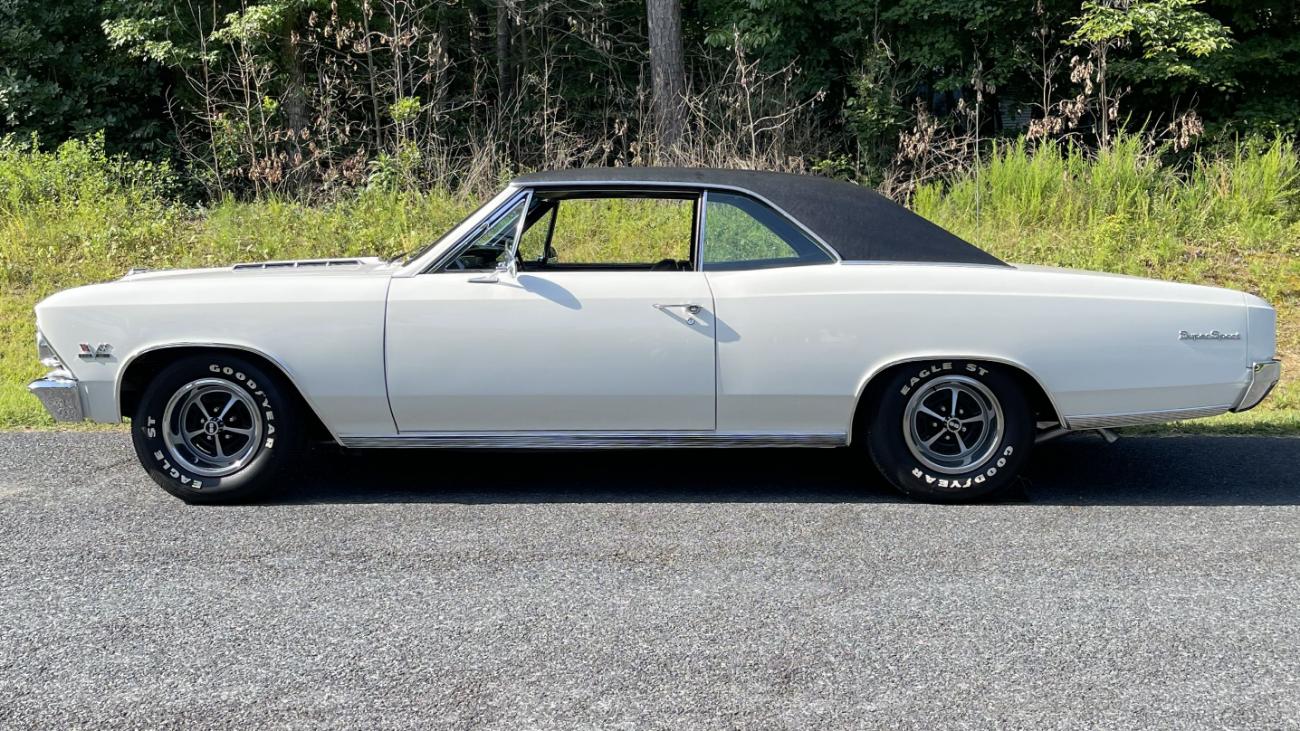
Out back, you’ll find a dual exhaust system running around the rear axle that houses 3.31 gears. Braking is handled by four drums.
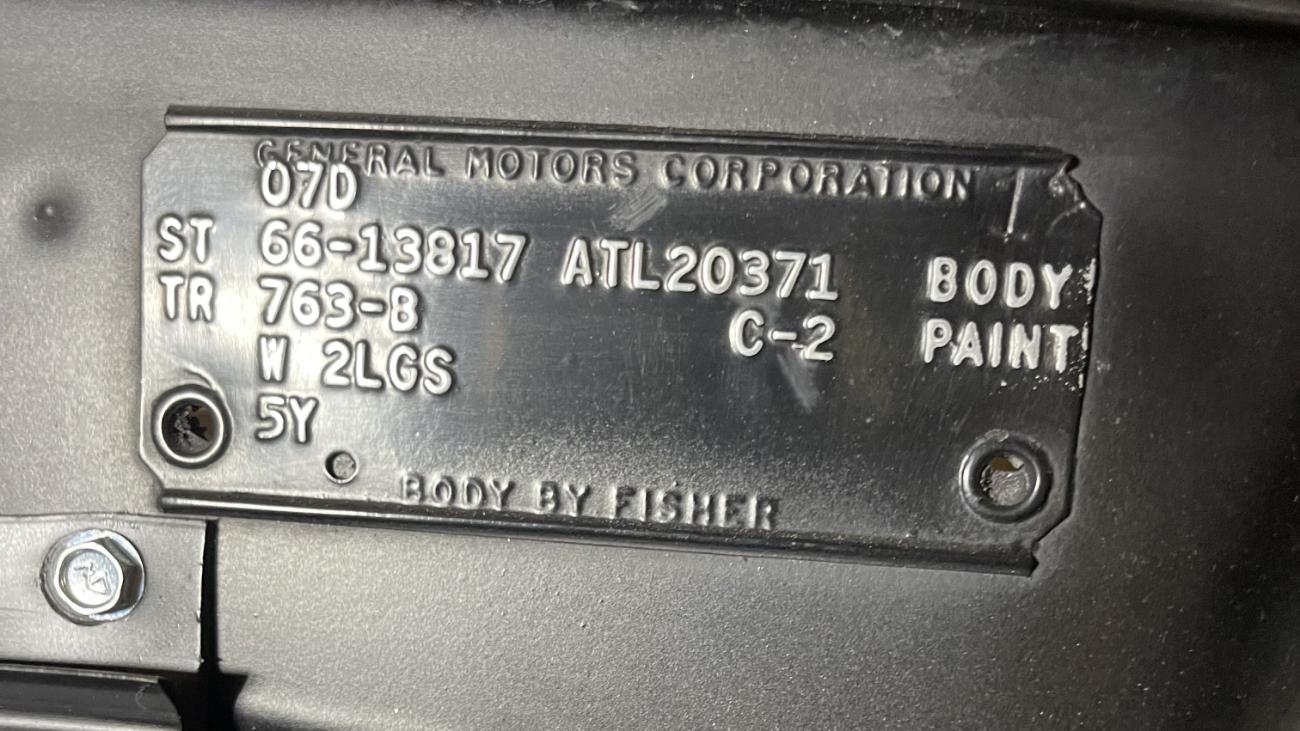
It’s undeniable that 1966 Chevelles are good-looking. It’s also undeniable that the 396 is one of the top engines of the muscle car era. Combine the two and you have this very cool, restored 1966 Chevelle SS 396 Sport Coupe for sale on AutoHunter. To bring it to your garage, you must make the top bid before the auction ends on Thursday, August 7, 2025, at 11:00 a.m. (PDT)—if you’re reading this before that date, it’s very soon!
Visit the AutoHunter listing for more information and a photo gallery
Every person who enjoys automobiles also loves talking about them, especially their own. By submitting your My Classic Car story, you can tell the ClassicCars.com Journal‘s thousands of readers about your vehicle all at once.
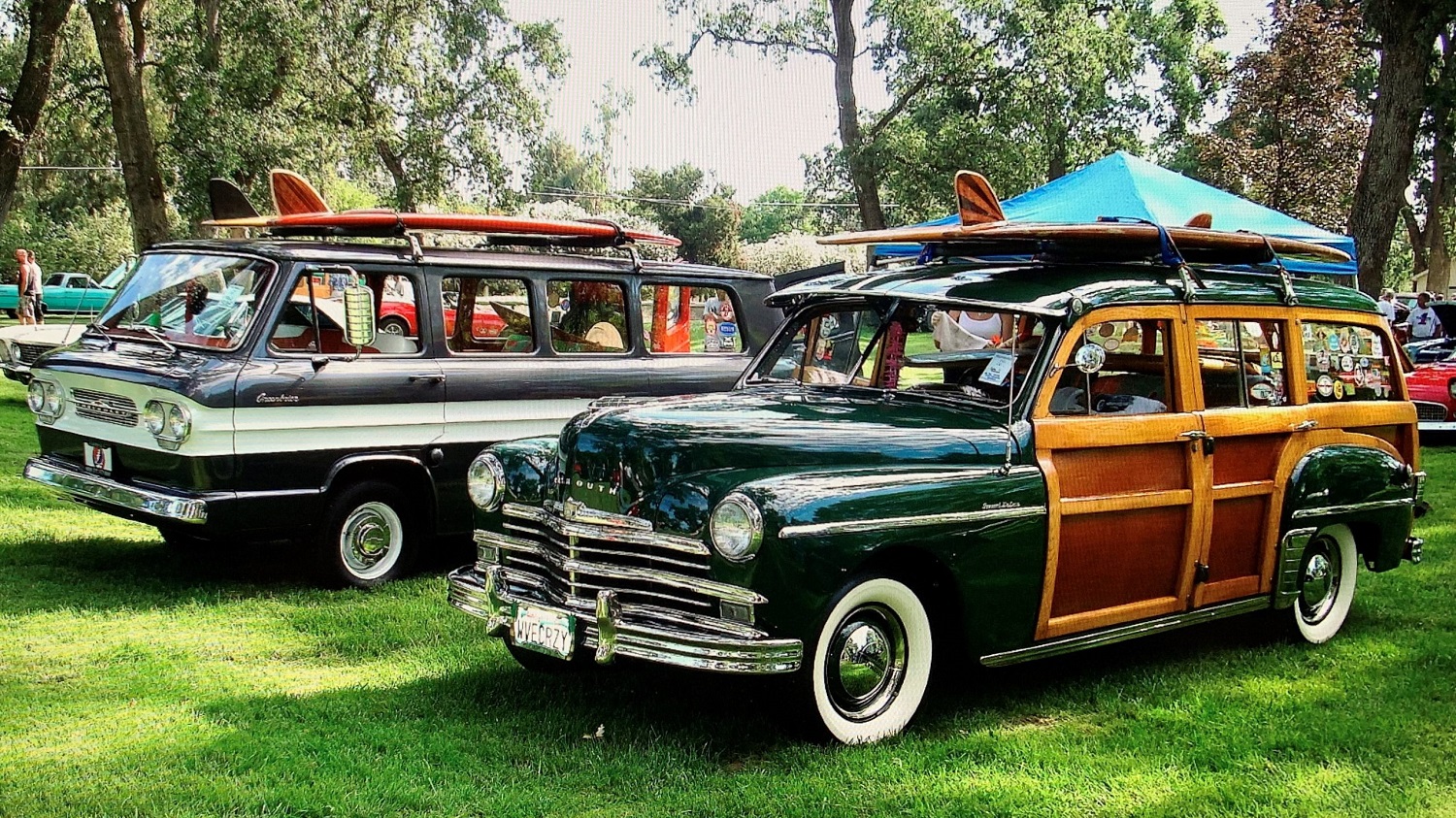
That’s how proud owners have spread the word about their 1-of-1 1974 Cadillac Mozelle, 1959 Chevrolet El Camino that went Down Under, James Bond-inspired 1970 Mercury Cougar XR-7 convertible, and dozens of other beloved machines. Sharing your My Classic Car story also gives you the chance to let us know your favorite things about it, how it’s been a part of significant moments in your life, and its importance to your family.
We know it’s impossible to love cars and not talk about them. We want to hear all about yours, so we’ve made the process of submitting your very own My Classic Car story easy. Do that right now by using the form below!
My Classic Car 2025
Please fill out the information requested below! Give us YOUR story of your car, and please include photos.
My Classic Car Submission Form
How Can We Reach You?
What do you want to share about this vehicle?
Max. file size: 50 MB.
This 1950 Chevrolet Bel Air was modified around 2010. The body was smoothed and refinished silver and black, and it rides on a modified chassis with a Jim Meyers Racing independent front end, rack-and-pinion steering, a sway bar, and disc brakes. The car is powered by a 5.7-liter LS1 V8 with an LS6 intake manifold, and the engine is linked to a four-speed automatic transmission and a 3.73 Positraction rear end said to be from a 1973 Camaro. The car also has a custom interior, a dual exhaust system, and Summit Racing 15″ alloy wheels. This Bel Air was purchased by the seller in 2014 and is now offered with a car cover and a clean Oregon title in the seller’s name.

Around 2010 the car was stripped, repairs were performed, and it was modified. The hood was pie-cut and smoothed, the rear fenders and trunk lid were smoothed, and the headlights and taillights were frenched. A single-piece windshield has been installed.

The car rides on a Jim Meyers Racing front end with 2″ drop spindles, coilovers, disc brakes, rack-and-pinion steering, and a 1″ sway bar. Lowering blocks were installed out back, and it retains a leaf spring rear suspension with drums. The 15″ Summit Racing wheels have staggered BFGoodrich tires mounted, and a custom master cylinder and booster were used. The seller notes drips from the power steering system.

The bucket seats were sourced from a Chevelle, and the console was fabricated. Custom upholstery covers the interior, and Vintage Air climate control and a Lokar shifter were fitted. The front door panels have trim pieces from a 1950 Oldsmobile.

The Impala-style steering wheel is mounted on a tilt column, and Auto Meter gauges were installed. The 1,700 miles indicated were all added by the seller.

The seller states the 5.7-liter LS1 V8 was sourced from a 1998 Camaro with 63k miles. An LS6 intake was fitted along with headers and custom beauty covers, and the car also has a custom radiator and an American Auto Wire harness modified to fit the push-button starter. The battery was relocated to the trunk.

The four-speed 4L60E automatic transmission is linked to a 1973 Camaro Positraction rear end. Custom crossmembers were added.
Muscle cars are often seen as symbols of unrestrained performance, but their fiercest evolutions have emerged in response to adversity. Throughout history, periods of crisis—from the 1970s oil embargoes to strict emissions regulations and economic downturns—have forced automakers to rethink their strategies. Rather than fading away, many iconic muscle cars adapted by becoming even bolder, integrating new technologies and audacious designs. These moments of tension and constraint have not only shaped the muscle car landscape but have also produced some of the most powerful and innovative vehicles ever built.
Carolyn and Craig Jackson, known for their commitment to the collector car industry and community, will showcase their most recent restoration, a 1936 Bugatti Type 57 Stelvio Chassis No. 57406, during this year’s Pebble Beach Concours d’Elegance on Sunday, August 17 in Carmel, California. The freshly restored Bugatti, which will be exhibited in the European Classic class, reflects the Jacksons’ efforts to make the Stelvio closer to a sound vintage rally car and honor the car’s previous owner and their friend, Don Williams. The Pebble Beach Concours will be the first public appearance of the car since its restoration. Additionally, the Jacksons will display “Little Red,” one of the most historically significant Shelby Mustangs ever built, at The Quail, A Motorsports Gathering, on Friday, August 15, 2025.
“We were deeply honored to assume stewardship of the Bugatti Type 57 previously owned by my close friend, Don Williams,” said Craig Jackson, chairman and CEO of Barrett-Jackson. “When working with my team, we not only wanted to ensure the Bugatti was mechanically sound but honor Don’s legacy and his love for the craftsmanship and design of this beautiful car. It’s especially rewarding to showcase this Bugatti during this year’s Monterey Car Week, where fellow auto aficionados and collectors from around the world can share our passion for this newly restored Bugatti.”
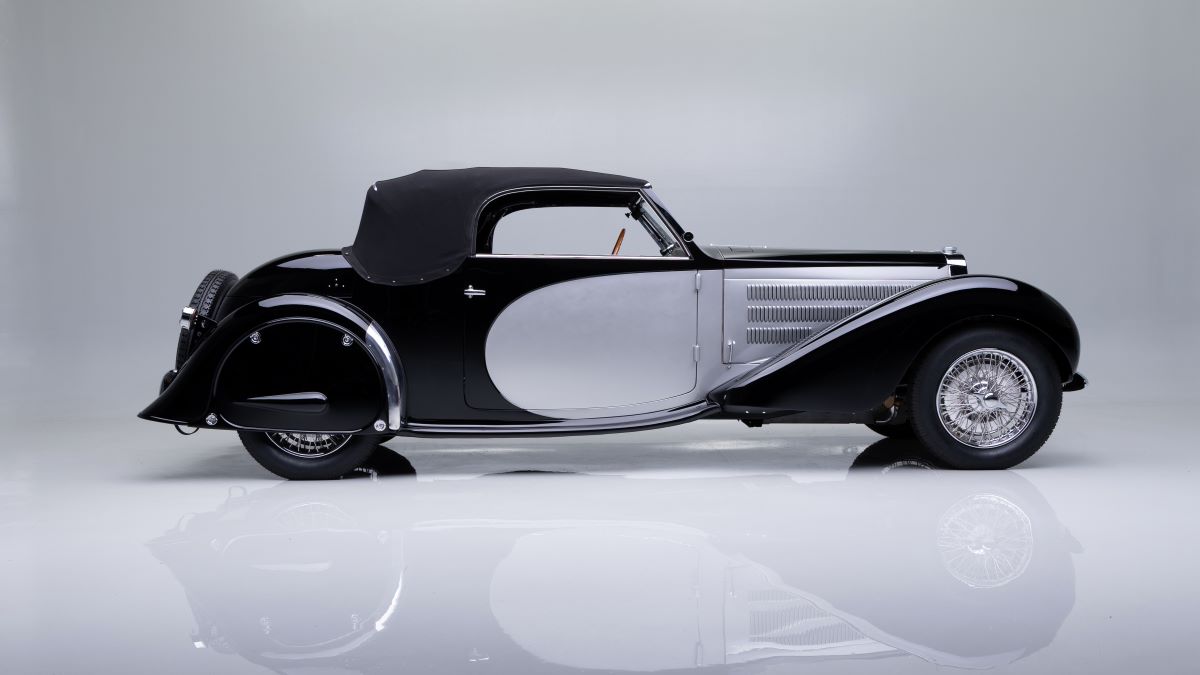
Examined by Bugatti Heritage and Certification Specialist Luigi Galli, the Bugatti retains its original No. 286 engine, No. 98C transmission (typically seen in a supercharged Stelvio), No. 427 rear axle and its No. 80 internal frame. Under Jackson’s leadership, the engine was completely rebuilt, the chassis was stripped and sandblasted and the body was fully repainted a deep, rich PPG black. Jackson selected a striking silver for the “sweep panels” that matches his 2023 Bugatti Chiron, creating a visual bridge between the marque’s prewar elegance and modern hypercar performance.
“Carolyn and I are very proud of the work that our talented team poured into the restoration of the Bugatti, and to have this historic vehicle as part of our collection,” said Jackson. “We’re honored to now be a part of this car’s rich provenance, which includes its original owner, Mr. R. Petit, as well as French actor Jacques Dufilho, 12 Hours of Sebring founder Alec Ulmann, the Blackhawk Museum and Don Williams. We’re committed to preserving it for the next generation of collectors.”
Further highlighting the Jacksons’ dedication to preserving automotive history, they will also showcase “Little Red” at The Quail, A Motorsports Gathering. One of the most historically significant Shelby Mustangs ever built, the 1967 Shelby GT500 EXP prototype nicknamed “Little Red” is the only twin supercharged Shelby ever built and is equipped with a 428ci engine and dual four-barrel carburetors. “Little Red” was lost for decades, Jackson led the five-year effort to locate, recover and restore the coupe to its original factory specifications.

“I’ve had the privilege of learning how to work on and restore cars with my late brother Brian, as well as my father Russ, Don Williams and Tom Barrett,” said Jackson. “The opportunity to present our restored Bugatti connects all of us to its legacy of craftsmanship and innovation that has shaped the automotive industry for over a century. Carolyn and I will continue to be part of world-class events that preserve and elevate timeless vehicles – whether it’s a rare European classic or a one-of-one American icon.”
Do you enjoy cartoons? I’m a big fan of Bugs Bunny, having spent my youth watching many Warner Brothers shorts among others that were in syndication. Another Warner Brothers character joined forces with Plymouth for 1968 and started a cartoonish trend in Detroit, four examples of which you can find below. All are cars for sale on AutoHunter or ClassicCars.com.
Can you identify each? Please tell us in the Comments section below. If you need a hint, just click on the respective image that’s giving you fits.
Click on a photo to reveal each car
Every Tuesday you can solve a new automotive puzzle at The Classic Cars.com Journal. You can also play previous games for even more car fun!
The term “car enthusiast” is a little misleading. Every one of them that I know doesn’t just have their car(s)—they have a collection of Hot Wheels or 1:18-scale model cars or automotive memorabilia. Some enthusiasts out there even enjoy putting together Lego kits that look like their favorite cars. If you’re one of those people, get your credit card out because Lego has made the Bugatti Centodieci the newest addition to its Speed Champions line, and it’s available now.
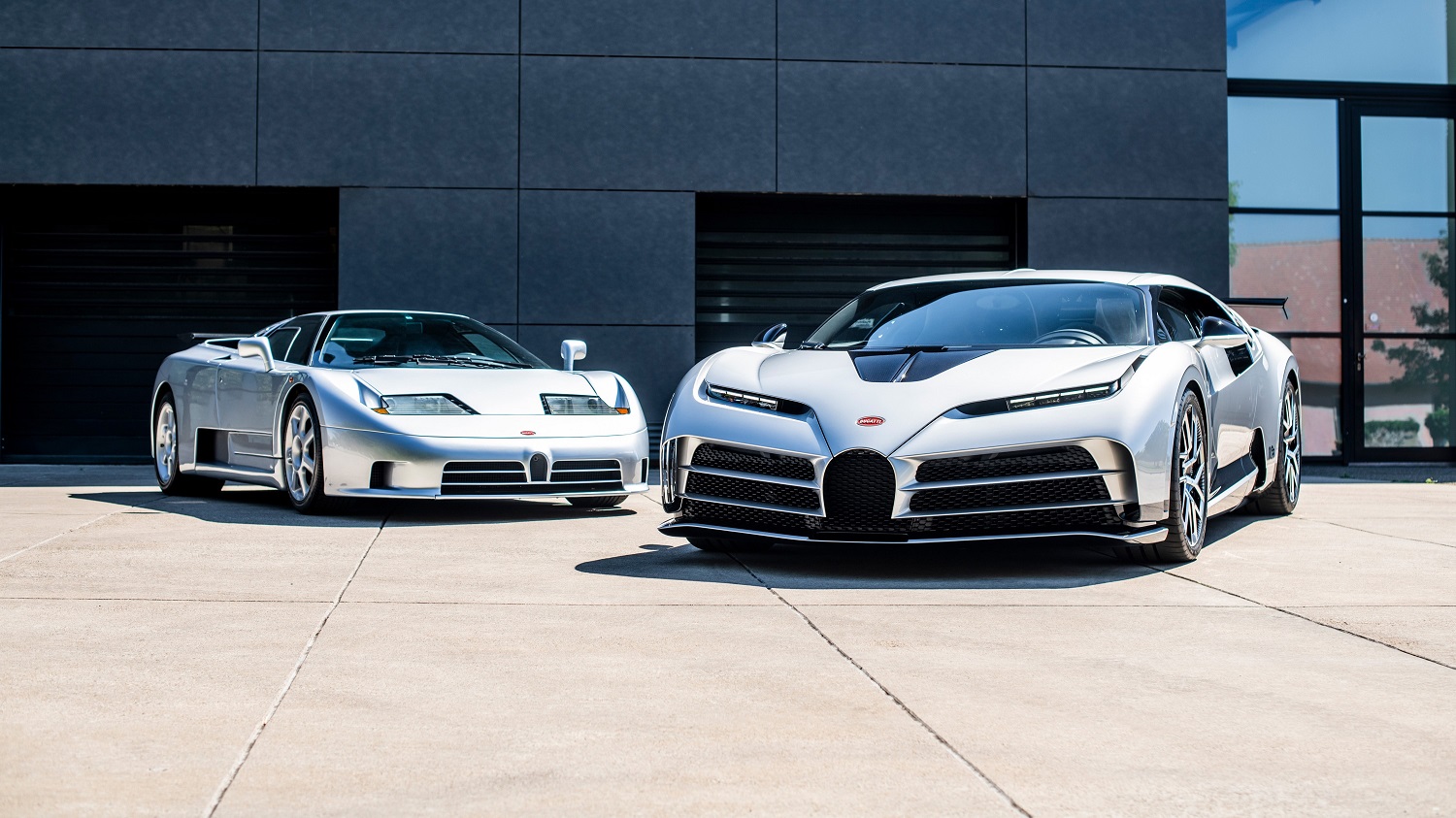
Consider the Bugatti Centodieci (Italian for 110) the company’s homage to one of its modern classics. From the late 1980s until the mid 1990s, Bugatti was owned by Italian entrepreneur Romano Artioli. In that short time, Bugatti built the EB110 GT, a quad-turbo V12-powered hypercar with a six-speed manual, and the lighter and more powerful EB110 Supersport at a factory in Italy.

In 2022, Bugatti produced a run of 10 Centodieci models powered by an 8.0-liter quad-turbo W16 and styled after the EB110 Supersport, complete with a small horseshoe-shaped front grille, a red Bugatti badge on the nose, five cooling holes on each side, and a black rear wing.

Lego’s 291-piece version of the Centodieci not only recreates its signature design elements, but the literal “kit car” also has the same color basic scheme as the final Centodieci that Bugatti made: white over a blue interior—minus the leather, of course. The included minifigure can either be put behind the wheel or used to draw more attention to the latest addition to your shelf full of car-related collectibles.

